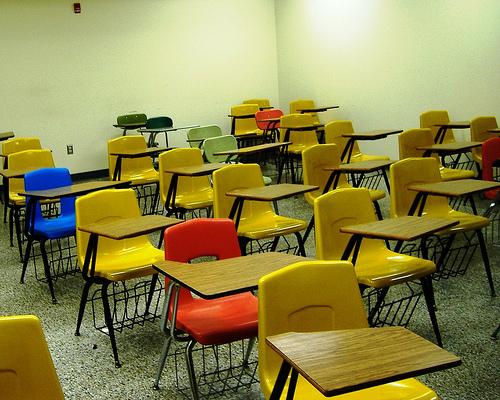Rural schools recruit international students to raise money
Schools in some rural areas look to fill empty seats with international students in order to stay afloat. (Photo from Flickr user Emory Maiden.)
Small towns in the United States are shrinking, hollowing out rural American schools.
Smaller student population means less funding from the state government. And that’s a problem.
Some schools are looking outside the box, even outside the country, in order to supplement lost funding. Schools like one in Newcomb, N.Y., are recruiting international students to go to their schools. International students pay up to $30,000 per year to attend public schools in the U.S.
“Our biggest issue that we were facing was just a total lack of diversity,” said Skip Hults, the superintendent of Newcomb Central School District. “So we were looking at, first and foremost, the issue of diversity, and having an underutilized school, that our classrooms were empty period.”
Hults’ district was one of the first to recruit abroad. Because of this, they are one of the cheaper districts in the country for international students. Next year, it will cost $9,000 for an international student to attend school in the Newcomb Central School District, with $4,500 going towards housing. Hults said this will bring in about an extra $90,000 per year.
“We don’t have costs. Our costs are consumables. Our costs are food. And our costs are field trips because we already have text books, desks, the teachers, the staff. We don’t have additional expenses because of these students,” Hults said.
While it may seem these schools are selling an education to the highest bidder and creating a competition for spots in public schools, Grant Vander Vorst, the superintendent of the Grant-Deuel School in Revillo, S.D., said this isn’t the case.
“We have room in our school to help educate other students, and I think there is education (for) us. If everybody is thinking alike out there, than nobody is really thinking,” Vander Vorst said. “I think that’s what’s hard for people, sometimes, is, this is a broad thought, that we’re bringing in people from other countries and putting them in our American schools.”
Skip Hults said charging international students is actally sometimes necessary, depending on the type of visa they have. The J-1 visa is intended to promote a cultural exchange, whereas the F-1 visa is intended for foreign students pursuing an education.
“There is a very big difference between students that come from a J-1 visa, where there is no tuition to a school district and no money for housing. Under the F-1 visa, we have found these students are very academically strong, very academically motivated,” Hults said.
The F-1 visa only allows for students to attend public schools for one year in the program, which can be problematic for schools attempting to recruit abroad. Hults said he has been working to change this law.
Recruiting international students appears to help the issues of schools lacking diversity; international students make up 20% of the enrollment at the Grant Deuel School. But whether it will provide a long-term financial solution remains to be seen.
